1
WILMA MORRISON'S WORK WITH:NATHANIEL DETT MEMORIAL CHAPEL AND NORVAL JOHNSON HERITAGE LIBRARY
Dictated by Wilma Morrison to Lyn Royce on May 5, 2009
It was a surprise to us and the lady who was in charge of the church then… like I was just coming to church and throwing my money in and going home because I didn't want to be involved. I had been involved in Hamilton, and in London, and I wasn't going to be involved again.
The minister at the time (1987) - Ernest Crawford - had approached the British Methodist Episcopal (BME) Church Conference to ask permission to sell the church and parsonage property without mentioning it to the people attending service. The conference agreed to permit the sale to go ahead.
I'm not sure whether Nita Chamberlain - she and her husband, who were both white; and Warnita Levine, who was a member of one of the old families here; had kept the church going since a little after Norval Johnson had died - felt that she shouldn't speak on behalf of the black community, but Nita called me.
Anyway, the Real Estate Agent called me and said: 'The Minister called and said the church was for sale. I replied: 'It's not!' I told the agent, of Italian heritage, that she '…had her local heritage site in Club Italia and this (Nathaniel Dett Memorial Chapel) was the only thing left in town that indicated the presence of black people and their contribution to the development of the Niagara Falls community for over 200 years.' My husband Lorne's comment on all this was: 'Well, mouth, you've got $1.98 in your pocket and now you've got a church!' 'Well,' I said, 'I have to try!'
I started by talking to my Mother-in-law in Collingwood - hers was the family that ran the church up there. That congregation had a choir which agreed to come down and gave a concert to start raising the funds needed just to pay the bills - there was no money in the treasury at that time. If you can believe it, that thing that got permission to sell the property, would not allow us to have the concert in the chapel we were trying to save. We had to rent a hall for that concert.
We knew the teaching of black history had been introduced to the Ontario curriculum in 1982 but wasn't being taught. So we decided that we would set up a library: then teachers would have the opportunity to have reference material available to them. And that was also a way of keeping the church building open - the church only had 3 members at that time. The Ontario Historical Society gave a $5,000 grant to help set up the library.
We received such co-operation in those early days!
I went through Ebony magazine and created a list of books to begin with and the man, who ran The Book Corner, over the river in Niagara Falls (New York), not only filled the order but carried all the books across the border so we wouldn't have to pay duty or shipping costs. The die was cast and the Norval Johnson Heritage Centre Library opened in March 1991.
We had talked about seeing busloads of black people driving up and down Lundy's Lane in Niagara Falls; walking about and looking all aimless. Jeepers! You felt like jumping out of your car and saying: 'Come on over here! Have I got a story to tell you!' A woman I worked with at the local hospital, her son had a tour agency. She called one day and asked for info on black history because she was leading a tour group. It was Sidney Poitier and his family and I had met him previously and asked to go along but wasn't allowed to because I wasn't a tour guide! So all I could so was supply the information on that occasion but it led to Dave Hyde and I putting together the Niagara Freedom Trail story. I approached June Spear in Fort Erie; she was really agreeable and even put in an extra stairwell for access to the basement at Bertie Hall. And we went around Niagara-on-the-Lake to see what sites could be used there and we knew that, because in 1993 I had been asked to be part of the planning committee, along with Don Thomas, for the 200th Anniversary of Governor Simcoe's Anti-Slavery Edict and had had to bone up on that history, the Parliament Oaks School site had been used. Commemorative statuary was put there as well by the Castellani Art Museum, Lewiston N.Y. - it is one of seven statues to the Underground Railroad with the remainder placed in locations through upper New York State. We began collecting the history of Niagara and the tours began with approximately 800 visitors within the first year. The following year, Salem Chapel BME Church in St Catharines joined us and we 3 sites have been workin' ever since!
The Nathaniel Dett Memorial Chapel itself needed heritage restoration construction work. Don Thomas, who worked with his Mom and Dad who were former late members of the church, did a lot of restorative work on the interior. The roof and a new furnace were done first on their own, supported with the funding from visitors.
To accomplish the rest, in 2002, I sent out letters to a number of people asking for financial support for that and the Ontario Trillium Foundation answered in the affirmative, providing a grant for 2003-2006 for restoration work and further organizing of the library resources. Then the rest was done start to finish: remove original 3 sets of siding, original, asbestos and aluminium and... Well, you can see all the details in the timeline that follows. I am really grateful, too, for the second grant to improve Library service hours open to the public and to develop new Canadian Black History educational materials that the Ontario Trillium Foundation approved for 2006-2009. Preservation of the Chapel has been completed - we've been told it will last another 100 years - and the library collection will be preserved in proper quarters for the preservation of books and print materials by the transfer to the main branch of the St Catharines' Public Library scheduled for the early fall of 2009.
2
A version of the Running Man symbol of the Underground Railroadunknown
No location applicable
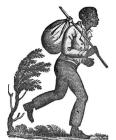 Credits:
Credits:Norval Johnson Heritage Centre
3
TIMELINE FOR THE NATHANIEL DETT MEMORIAL CHAPELAdapted from material provided by Wilma Morrison to Lyn Royce on May 6, 2009
1814
The Methodist Mission began in 1814 following the War of 1812. Blacks in freedom held a victory celebration and out of that gathering grew the foundation of a church as early communities of free people centered their spiritual and social activities within their churches. In the beginning, meetings took place in members' homes.
1836
The Methodist Mission Church was built and originally located in the Portage Road and Murray Street area of Niagara Falls (Ontario). Churches were sometimes used as sanctuaries for runaway slaves with the pastor often acting on their behalf, as bounty hunters were ever present.
1856
The Methodist Mission Church joins the newly formed British Methodist Episcopal (BME) Conference.
1890
The Church was relocated - rolled on logs, downhill, about 4 blocks - to its present location at the corner of Peer Street and Grey Avenue in an area known as Drummondville before it became the Town of Niagara Falls. The property was donated by Oliver Pernell, and his wife, Mathilda. Pernell had come to freedom in Niagara in the 1850s and told the granddaughter of one of his employers that he had had to swim the Niagara River to freedom.
1897
Vocalion organ purchased from Woodstock Organ Company, for $80, purchase agreement signed by Rev George Blount and Mrs Mary Ann Pierman. This Toronto company discontinued operations during WWI due to lack of metal for production.
4
British Methodist Episcopal (BME) Church, Niagara Falls, Ontario20th Century, Circa 1920
Peer Street, Niagara Falls, Ontario, Canada
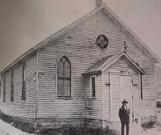 Credits:
Credits:Toronto Public Library (TRL). 1963 Negroes, Box 1, Picture no. 11
5
1913Chapel pews purchased by the congregation from Our Lady of Peace Catholic Church to replace original pews.
1954
The chapel closed in December 1953 as the minister, Rev Luther Crawford, underwent surgery. Extensive repairs to the rear were made in preparation for the scheduled March 1954 re-opening of services. Members James Little, Walter Smith and Tennyson Sutton gave of their time and talent to carry out the repairs. Contributions of materials came from Gordon Mitchell, Project Manager of the Sir Adam Beck Generating Station #2 and Rayner Atlas, Contractor, on the hydro job. [From the Niagara Falls Review, March 18, 1954, provided by Niagara Falls City Historian Sherman Zavitz in June of 2008]
1959
In November, Member George Smith donated $151 dollars worth of roofing shingles. Volunteers who installed them were rewarded with a boiled dinner from the Willing Workers Society. In the same year, new windows worth $249.50 were installed through the donations of church members and families.
1960
L. Scordino repaired the cement foundation of the Chapel. Pulpit carpeting, purchased from Wallace's Store on Queen Street in Niagara Falls (Ontario), was installed.
1961
Kitchen cupboards and linoleum for the Sunday School Room were installed with donations from Members George Smith and James Bolles.
1975
Pastor Arnold Daley sent out a general request for funding to perform much needed repairs to both the chapel and the manse. Aluminium siding was installed on the manse at a cost of $3,550. Repairs were made to the front porch for $150 and the water supply line upgraded for another $150.
1978
Pastor Blackwood upgraded the insulation in both chapel and manse at a cost of $1,070.
1983
Updated windows were installed in the manse next door to the chapel with assistance from the BME Conference Missionary Society.
6
Oliver Pernell with young Margaret Cadham, then age 320th Century, Circa 1905
Niagara Falls, Ontario, Canada
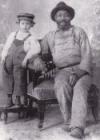 Credits:
Credits:Norval Johnson Heritage Centre
7
1984The chapel was re-named in honour of world famous musician and composer Dr Robert Nathaniel Dett who was born in Niagara Falls and whose family were members of this church. Nathaniel played the vocalion organ in the chapel until he graduated from Niagara Falls Collegiate and Vocational Institute. Dr Dett gained fame as a musician, composer and music teacher, directing choirs from Hampton University in Virginia for many years until his death in 1943. The vocalion organ he played remains in the Memorial Chapel to this day, though sadly in need of unaffordable repairs at the date of this writing.
8
R Nathaniel Dett20th Century, Circa 1900
Niagara Falls, Ontario, Canada
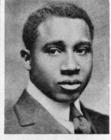 Credits:
Credits:Norval Johnson Heritage Centre
9
Nathaniel Dett Memorial Chapel, prior to beginning restoration20th Century, Circa 1998
Peer Street, Niagara Falls, Ontario, Canada
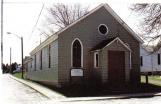 Credits:
Credits:Norval Johnson Heritage Centre
10
1986The Nathaniel Dett Memorial Chapel is declared a 'Heritage Site' by the City of Niagara Falls Heritage Committee; then chaired by George Seibel.
1987
Further restoration projects began when the Chapel was placed on the market for sale and possible demolition. Ernest Crawford, the then pastor, had requested and received permission from the BME Conference for disposal of the property.
1989
The choir and members of Heritage BME Church of Collingwood came to Niagara Falls to give a benefit concert as part of the fundraising drive for chapel repairs. Pastor Crawford refused permission for the concert to be held in the Chapel it was intended to help save. Member Lorne Morrison rented a nearby hall and the well-received group netted proceeds over $200 to benefit the Chapel.
1990
Rev Dr Daniel Rupwate, General Superintendent of the BME Conference at the time, was posted to the dual charge of Salem Chapel, in St Catharines, and Nathaniel Dett Memorial Chapel. With only 2 active members at the time, Dett Chapel had no funds for a ministerial salary. A meeting was held to discuss what might be done to keep Dett Chapel open and it was suggested that a search for funding to establish a library of black Canadian history be made. Such a library would benefit educators and students searching for information on the subject, particularly in the Niagara Region.
11
Heritage Street signs at Nathaniel Dett Memorial Chapel20th Century, Circa 2007
Peer Street, Niagara Falls, Ontario, Canada
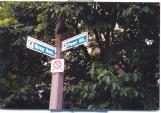 Credits:
Credits:Norval Johnson Heritage Centre
12
1991On March 11, the Norval Johnson Heritage Library opened having received a $5,000 grant from the Ontario Historical Society to begin operations. The Library was originally opened in the Sunday School Room of the Dett Chapel. In the same year, members decided the Chapel required rewiring to upgrade to 100 amperes. Work was done by local contractor Anton Pek and financed through funding donations.
1992
Donald Thomas and Wilma Morrison were invited to participate in the 200th Anniversary celebration of Governor John Graves Simcoe's effort to abolish slavery in Upper Canada. The act of abolishment had been reworded to state that no new slaves could be brought here, thus supporting the extension of the Underground Railroad into the area.
1993
Donald Thomas undertook repairs and upgrades to the washrooms and kitchen. Don's late parents, Mr and Mrs Garnet Thomas, had been members of the Nathaniel Dett Memorial Chapel. Celebration of Governor Simcoe's edict took place in Niagara-on-the-Lake on July 9, 1993. The commemoration, originally planned as a one-day event, extended over the entire weekend, with jazz performances on Saturday and Sunday church services featuring choirs and gospel music.
1994
The "Niagara's Freedom Trail Tours" project began, making visitors and tour groups aware of the story of the black community and its contribution to the history of Niagara Falls. David Hyde, of Niagara Falls Tours/Reception Inc., assisted in the assembling of tours sites and the training of guides. This brought to life stories of the "freedom seekers" who followed the "Underground Railroad" into Canada and of their life in Niagara. Early feedback on these tours was most positive and at the date of this writing they continue to be a strong draw for visitors to the Niagara Region.
1995
Repairs and upgrading of the Dett Chapel continued as stained glass windows were refurbished and storm windows installed to protect these from the weather. Windows and eaves were repainted. Pulpit chairs were re-upholstered for the first time in anyone's memory, with the work done by a young man of First Nations descent, John Seibel.
1996
Donald Thomas decided that the furnace was no longer welcome in the Chapel, so he and friends built a small separate room at the rear of the Sunday School Room in which to house the furnace. To accomplish this, a pit had to be dug under the Chapel to accommodate the ducts, which prior to that had been overhead. Heating bills saw an immediate reduction, too.
1997
The Chapel roof was replaced to meet the standards of the Heritage Committee of Niagara Falls, with insulation blown into the upper area. At the same time, roofing and insulation were replaced on the manse. For $856, Medici Concrete Works removed a dangerous cracked sidewalk and replaced it with a walkway that was more easily accessible to the rear of the Chapel, as well as from street to rear of the manse.
1998
The Sertoma Club of Niagara Falls approached the congregation to ask if there was a specific wish for an improvement to the Chapel. With the linoleum flooring in very poor condition, the wish to restore the floors was expressed and with the original pine board found to be in good condition, another piece of heritage restoration completed. The thank-you services held for the Sertoma Club and others were definitely in order.
1999
By this time, the Norval Johnson Heritage Library had outgrown its small space at the rear of the Dett Chapel. When the tenant vacated the manse building, BME Conference General Superintendent Rev Dr Daniel Rupwate was approached with the concept of the Library renting the manse facility for the magnificent sum of $1 per year. Rev Rupwate agreed and, with a contract to that effect signed, the task of building shelves and moving books began. The collection has continued to expand, and, at the time of this writing, boasts over 1400 volumes of Canadian Black History along with extensive local black families' genealogical materials.
13
Wilma Morrison - Margaret Cadham, under photo of herself as a child with Oliver Pernell16 March 1991
Peer Street, Niagara Falls, Ontario, Canada
 Credits:
Credits:Norval Johnson Heritage Centre
14
Wilma (Miller) Morrison - with Margaret Cadham at Norval Johnson Heritage Library opening16 March 1991
Peer Street, Niagara Falls, Ontario, Canada
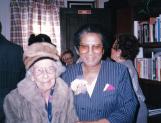 Credits:
Credits:Norval Johnson Heritage Centre